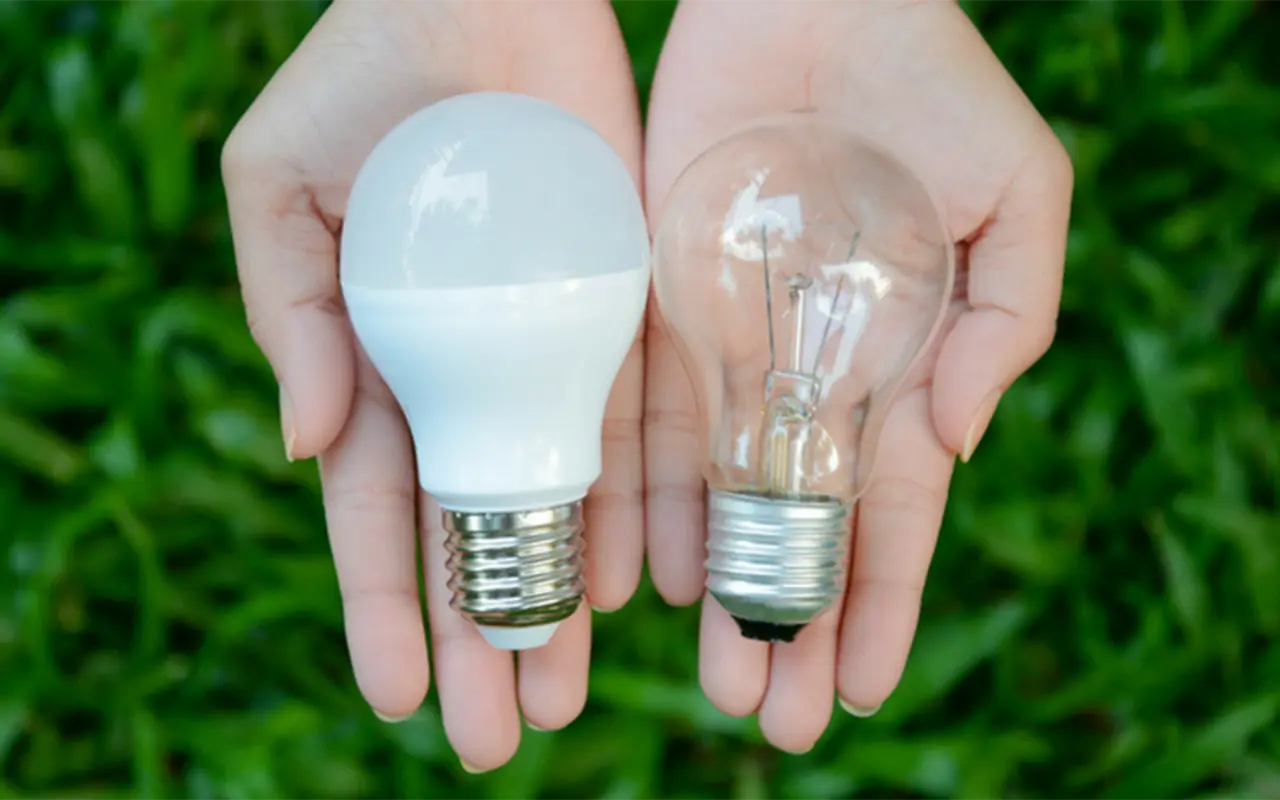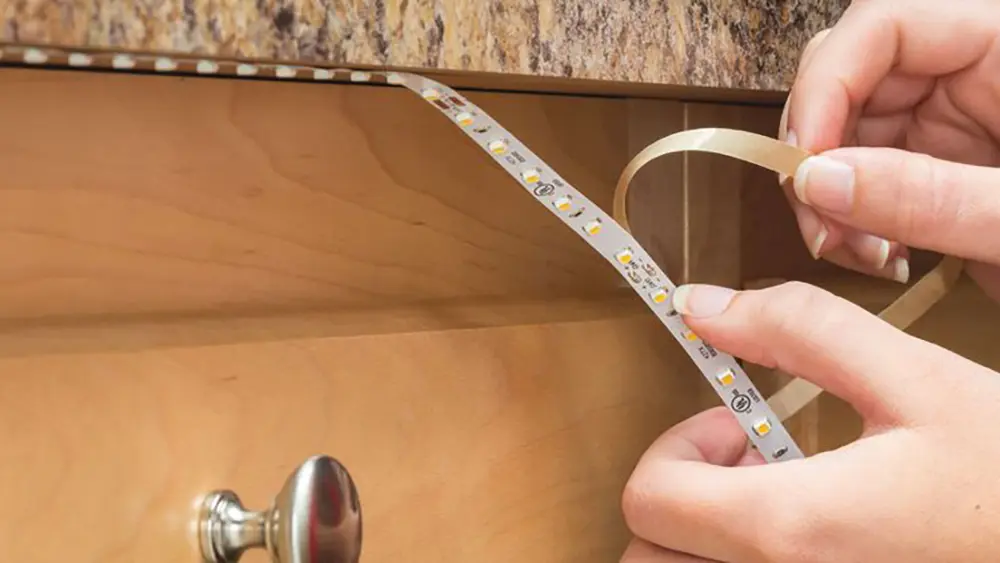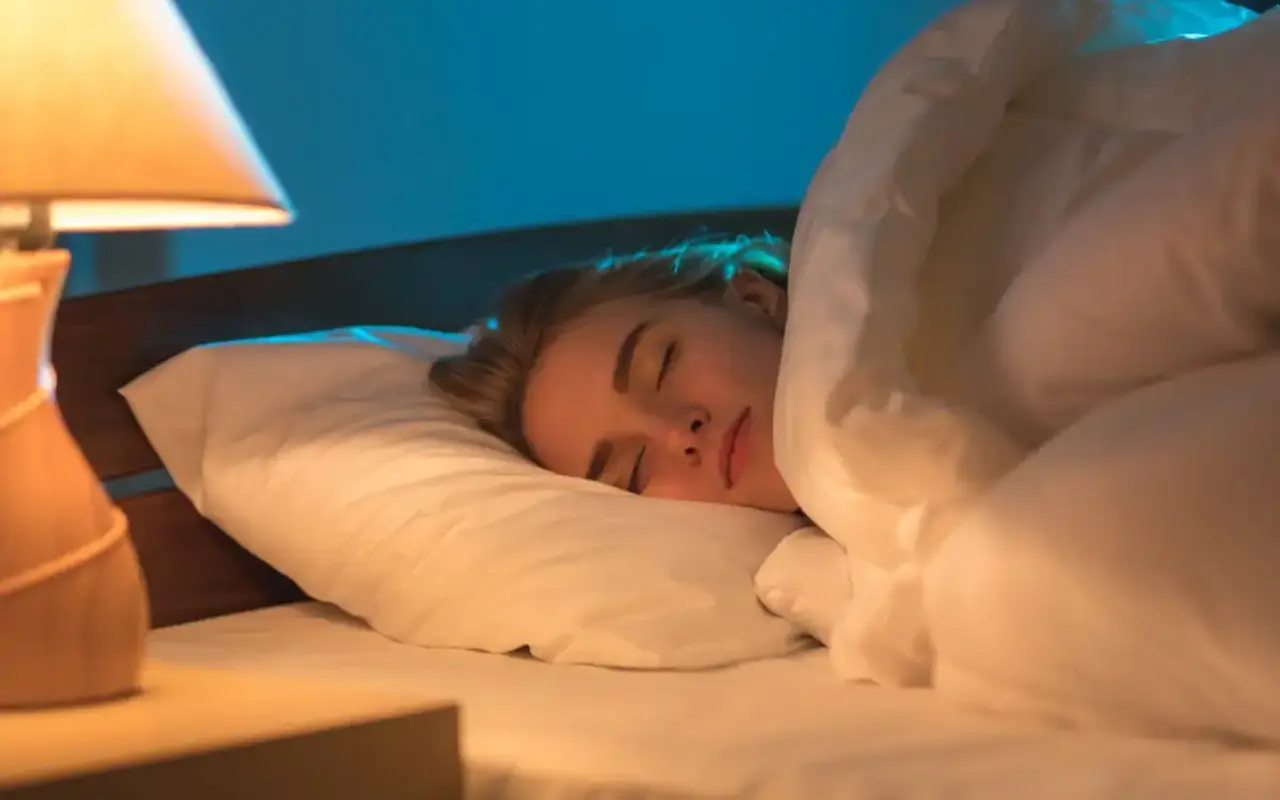LED 스트립 조명 주변의 벌레에 대한 도움이 필요하세요? 이러한 문제가 발생하는 이유를 알아보고 이를 방지하는 방법을 알아보세요. 필요한 정보가 있습니다.
LED 스트립 조명은 일부 곤충을 유인할 수 있지만 기존 조명보다 더 많은 곤충을 유인하지는 못합니다. 빛의 색상과 밝기는 LED 기술보다 곤충을 유인하는 데 더 큰 영향을 미칩니다.
LED 스트립 조명과 곤충의 매력에 대한 자세한 가이드를 살펴보세요. 벌레가 조명에 끌리는 이유를 알아보고 "LED 조명이 벌레를 유인하나요?", "벌레가 LED 조명에 끌리나요?" 등의 질문에 답하기 위해 LED 조명의 특성을 살펴봅니다. 계속 읽어보고 인사이트를 얻어보세요!
벌레는 왜 빛에 끌리나요?
현상 이해: 과학적 설명, 포토택시
빛이 벌레와 곤충을 끌어당기는 이유는 광축 현상 때문입니다. 흥미롭고 복잡한 현상입니다. 광축은 유기체가 빛을 향해 또는 빛을 피해 이동하는 생물학적 반응입니다. 거미, 파리, 벌, 말벌, 나방과 같은 벌레는 일반적으로 광원에 끌립니다.
곤충마다 길 찾기, 짝짓기, 먹이 찾기 등 다양한 이유로 야행성 행동을 합니다. 많은 곤충은 밤에 달과 별의 빛을 이용해 길을 찾습니다. 곤충은 인공 불빛에 혼란을 느껴 평소 경로 대신 원을 그리며 날아갑니다. 일부 벌레는 자외선이 꽃이나 먹이와 관련이 있다고 생각하여 자외선에 끌립니다. 곤충의 행동은 해충을 방제하고자 하는 주택 소유자와 기업에게 영향을 미칩니다. 단순히 기발한 것만은 아닙니다. 우리는 스마트한 조명 선택을 통해 곤충을 유인하는 방식을 제어할 수 있습니다. 이를 통해 원하는 결과를 얻을 수 있습니다.
LED 조명과 다른 광원 비교
벌레 유인 효과와 관련하여 모든 광원이 똑같이 만들어지는 것은 아닙니다. 밝은 현관 조명은 종종 벌레 떼를 끌어들이며, 사용되는 전구의 종류에 따라 어떤 벌레가 오는지에 영향을 미칩니다. 많은 곤충은 백열등이나 할로겐 전구처럼 LED 조명에 끌리지 않습니다.
그 비밀은 방출되는 빛의 스펙트럼에 있습니다. 많은 날벌레는 자외선을 적게 방출하는 LED 조명에 큰 매력을 느낍니다. LED 조명의 밝기와 색상을 변경하여 벌레가 덜 매력적으로 보이도록 만들 수 있습니다. 백열전구는 벌레가 좋아하는 자외선 등 더 많은 종류의 빛을 발산합니다. LED 조명은 더 많은 빛을 발산하고 열은 적게 내기 때문에 더 시원합니다. 또한 벌레에게 덜 매력적입니다. 집이나 사무실에서 벌레를 줄이려면 이러한 차이점을 아는 것이 중요합니다.
주택 소유자 및 기업을 위한 실질적인 시사점
벌레는 빛에 따라 다르게 행동합니다. 이는 과학자, 주택 소유자 및 기업에게 유용하기 때문에 흥미롭습니다. 올바른 실외 조명을 선택하면 벌레를 줄이고 주변 환경을 개선할 수 있습니다.
집주인은 성가신 윙윙거리는 벌레 없이 더 쾌적한 야외 공간을 즐길 수 있습니다. LED 조명에는 파티오와 정원에 벌레가 접근하지 못하도록 하는 특수 기능이 있습니다. 따라서 야외 활동이 더욱 즐거워집니다.
특히 숙박업과 같은 분야의 비즈니스는 이러한 영향에 큰 영향을 받습니다. 야외 좌석이 있는 레스토랑은 벌레 퇴치 조명을 사용하여 고객 경험을 개선할 수 있습니다. 호텔과 리조트는 야외 라운지와 수영장 공간을 아늑하고 벌레 없는 공간으로 만들 수 있습니다. 또한 LED 조명은 에너지 효율이 높아 지속 가능성을 추구하는 트렌드에 부합합니다. 더 나은 선택을 하려면 주택 소유자와 기업은 곤충이 빛에 끌리는 이유를 알아야 합니다. 이러한 지식은 편안함을 개선하고, 경험을 향상시키며, 환경 목표에 기여할 수 있습니다.
파장, 색온도 및 열
LED 빛의 스펙트럼 살펴보기
빛의 종류와 색상 등 여러 가지 이유로 벌레를 유인하는 조명이 달라집니다. LED 조명은 벌레가 좋아하거나 싫어하는 색을 방출할 수 있다는 특별한 특징이 있습니다. 벌레는 300~420nm 사이의 파란색 또는 자외선 빛을 좋아합니다.
LED 조명은 덜 매력적인 파장을 방출하도록 설계될 수 있으므로 곤충이 덜 끌립니다. 하지만 LED 조명은 특정 파장의 빛을 방출하여 곤충을 유인할 수 있습니다. LED 조명이 곤충에 미치는 영향을 연구하는 것은 해충 방제 및 과학 연구에 도움이 됩니다.
밝기, 색상, 열이 벌레를 유인하는 데 어떤 영향을 미칠까요?
곤충은 밝기, 색상, 열에 따라 인공 조명에 반응합니다. 빛의 스펙트럼은 빛의 밝기와 색을 연결합니다. 특정 색은 특정 곤충을 끌어들입니다. 나방은 밝고 하얀 빛을 좋아합니다. 다른 곤충은 더 부드러운 호박색 톤을 좋아합니다.
열은 곤충의 유인에도 중요한 역할을 합니다. 많은 곤충은 온도 변화를 감지할 수 있는 열 수용체를 가지고 있습니다. 백열등이나 할로겐과 같은 기존 전구는 상당한 열을 방출하여 이러한 열감지 곤충을 유인합니다. LED 조명은 에너지 효율이 높고 열을 많이 방출하지 않으므로 벌레가 매력을 느끼지 못합니다. LED 조명을 전략적으로 사용하여 곤충을 관리할 수 있습니다. 이 특성은 여기에 또 다른 층을 추가합니다.
LED 전구와 백열전구: 어느 쪽이 벌레에 더 나쁠까?
LED 조명은 백열전구 및 CFL에 비해 곤충에게 덜 매력적입니다. 백열전구와 CFL 전구는 자외선을 포함한 광범위한 빛을 방출하기 때문에 벌레를 유인합니다.
하지만 LED 조명을 개인화하여 이러한 매력적인 특성을 줄일 수 있습니다. LED 조명은 특정 빛의 파장을 방출하기 때문에 벌레에게 매력적이지 않습니다. 집이나 사업장에 벌레가 있는 경우 LED 조명을 사용하면 문제를 해결하고 에너지도 절약할 수 있습니다.
LED 스트립 조명은 어떤 종류의 벌레를 유인하거나 퇴치하나요?
특정 곤충의 유인: 거미, 말벌/말벌, 꿀벌, 파리, 지네
일부 LED 조명은 거미, 말벌, 말벌, 벌, 파리, 지네 등 특정 곤충에 영향을 줄 수 있습니다. 다양한 생물은 각기 다른 방식으로 LED 조명에 매력을 느낍니다. 일부는 조명 주변에 먹이가 모여들기 때문에 간접적으로 유인됩니다. 다른 동물들은 직접 스스로를 끌어당깁니다.
어떻게 제거하나요?
벌레를 제어하려면 LED 색상을 이해하고 환경을 효과적으로 제어하세요. 특정 LED 조명을 사용하면 원치 않는 영역에서 벌레 문제를 크게 줄일 수 있습니다. 적절한 색상, 밝기, 전략적인 조명 배치를 통해 벌레를 쫓아낼 수 있습니다.
LED 스트립 조명이 유인하지 못하는 것: 바퀴벌레, 빈대, 개미
LED 조명은 바퀴벌레, 빈대, 개미와 같은 해충을 유인하지 않습니다. 흥미롭죠. 따라서 이러한 해충이 우려되는 지역에서 LED 조명을 사용하는 것은 유익한 선택입니다. 곤충의 수용체가 LED 조명에 반응하지 않기 때문에 곤충이 LED 조명에 끌리지 않을 수 있습니다. LED 조명을 다른 방법과 함께 사용하면 해충을 방제하는 데 도움이 될 수 있습니다.
LED 스트립 조명이 벌레를 유인하지 않게 하려면 어떻게 해야 하나요?
LED 스트립 조명을 효과적으로 배치하기
LED 스트립 조명이 벌레를 유인하는지 또는 퇴치하는지를 결정하는 데 있어 위치는 매우 중요합니다. 벌레가 조명에 끌리는 것을 줄이려면 벌레가 모이는 곳에서 멀리 떨어진 곳에 조명을 배치하세요. 모기를 줄이려면 축축하고 어두운 구석에서 LED 조명을 옮기세요. 벌레의 행동과 서식지를 고려하여 그에 맞게 조명을 배치하세요. 주변 환경을 이해하면 LED 스트립 조명을 배치할 때 벌레의 유인을 줄이는 데 도움이 됩니다.
LED 스트립 조명과 함께 버그 방지 장치 사용
벌레로부터 보호하려면 LED 스트립 조명을 전략적으로 배치하고 벌레 퇴치제를 사용하세요. 시트로넬라나 기타 에센셜 오일과 함께 방충망이나 메쉬를 사용하여 벌레를 쫓아낼 수 있습니다. 또한 벌레를 퇴치하는 LED 조명을 사용하면 벌레를 더욱 효과적으로 방지할 수 있습니다. 이러한 방법과 좋은 조명을 사용하면 보기 좋고 벌레 없는 공간을 만들 수 있습니다.
유지 관리 및 모범 사례
LED 조명에 벌레가 접근하지 못하도록 하려면 정기적으로 관리하고 권장 사항을 따르세요. 조명이 더럽거나 먼지가 많으면 벌레 퇴치 효과가 떨어질 수 있습니다. 정기적인 청소와 점검을 통해 성능을 유지할 수 있습니다. 벌레를 쫓으려면 온도가 약 2700K인 따뜻한 백색 LED 조명을 선택하세요. 벌레를 피하고 쾌적한 공간을 유지하려면 해충 예방을 위한 모범 사례를 따르세요.
LED 스트립 조명 및 버그에 대한 일반적인 오해와 오해
일반적인 오해 바로잡기
LED 조명에 대한 잘못된 상식은 종종 혼란을 야기합니다. 널리 퍼져 있는 오해 중 하나는 모든 백색 LED 조명이 곤충을 쫓는다는 것입니다. 특정 파장과 색온도는 밝은 색뿐만 아니라 곤충을 유인합니다. 이러한 혼란을 해소하는 데 도움이 됩니다. 청색광이나 자외선을 더 많이 방출하는 LED 조명은 더 많은 벌레를 유인합니다. 반면, 곤충은 청색광과 자외선이 적은 따뜻한 백색 LED에 덜 끌립니다. 벌레를 피하기 위해 소비자는 이 정보를 이해하여 올바른 LED 조명을 선택할 수 있습니다.
실제 사례 및 사례 연구
실제 증거는 LED 조명과 곤충의 관계를 더욱 잘 보여줍니다. 미국 곤충학회의 유명한 연구에서는 다양한 광원을 비교했습니다. 그 결과 LED 조명이 백열전구보다 곤충을 50% 더 적게 유인하는 것으로 나타났습니다. 실제 테스트에서는 따뜻한 색의 LED 조명을 사용하면 모기 유인이 20% 감소했습니다. 이러한 사례는 LED 조명이 곤충을 얼마나 잘 제어하는지 보여줍니다. 일상 생활에 유용한 과학을 실현합니다.
LED 기술 및 곤충에 대한 전문가 의견
전문가들은 LED 기술이 곤충에 미치는 영향에 대한 귀중한 정보를 제공합니다. 벌레 전문가인 제인 스미스 박사는 나방과 기타 야간 벌레가 자외선 방출량이 낮은 LED 조명에 덜 끌린다는 사실을 발견했습니다. 조명 디자이너인 톰 존슨은 벌레를 유인하지 않기 위해 실외 공간의 LED 색상과 위치를 신중하게 선택합니다. LED 조명은 벌레가 없고 아름다운 조명을 원하는 사람들에게 현명한 선택입니다. 전문가들도 동의합니다.
환경 영향 및 윤리적 고려 사항
LED 조명과 생태계에 미치는 영향
LED 조명은 기능적인 용도로 사용되며 생태계에 중요한 영향을 미칩니다. 벌레가 다양한 조명에 어떻게 끌리거나 쫓겨나는지 연구하면 먹이사슬과 환경에 영향을 미칠 수 있습니다. 조명에 유인되는 나방의 수를 줄이면 박쥐, 새, 나방에 먹이를 의존하는 다른 유기체에 영향을 미칠 수 있습니다. 조명의 변화는 특정 수분 매개체를 유인하여 주변 식물의 수분에 영향을 미칠 수 있습니다. 적절한 조명을 선택하려면 생태 전문가와 상담하고 환경을 평가할 수 있습니다.
해충 방제 시 윤리적 고려 사항
특히 조명 선택과 관련된 해충 방제에는 신중한 윤리적 고려가 필요합니다. 곤충으로부터 사람들을 보호하려면 환경에 해를 끼치지 않도록 주의해야 합니다. 우리는 생태계의 곤충을 존중하고 치명적이지 않은 방제 방법을 찾아야 합니다. 살생을 피하고 환경을 고려하는 선택을 하면 윤리적 결정을 내릴 수 있습니다. 환경 단체와 협력하여 권장 조명 방법을 사용하여 책임감 있게 곤충을 방제하세요.
조명 및 해충 관리의 지속 가능한 관행
지속 가능성은 현대 조명 및 해충 관리의 최전선에 있습니다. 지속 가능한 방법을 사용하면 환경을 보호하고 집과 사업장을 쾌적하게 유지할 수 있습니다. 환경을 보호하려면 해당 지역의 필요에 맞는 에너지 효율이 높은 LED 조명을 사용하세요. 무독성 퇴치제와 이로운 곤충에 해를 끼치지 않는 방법을 사용합니다. 지속 가능한 방식으로 해충을 관리하려면 예방에 집중해야 합니다. 다른 생물의 안전을 지키기 위해 차단막을 사용하고 위험한 화학 물질을 사용하지 마세요. 환경을 보호하기 위해 전문가와 협력하고 친환경 조명과 관행을 사용할 수 있습니다. 이를 통해 우리는 인간의 필요와 지구의 안녕을 조화시킨다는 더 큰 목표에 기여할 수 있습니다.
LED 조명에서 벌레를 방지하는 솔루션
곤충과 거미를 제거하는 자연스러운 방법
자연 요법을 사용하는 것은 안전하고 윤리적인 방법으로 LED 조명에서 벌레를 퇴치할 수 있습니다. 라벤더, 페퍼민트, 시트로넬라와 같은 식물은 강한 냄새를 가지고 있습니다. 이러한 냄새는 모기와 거미를 쫓아낼 수 있습니다. 이러한 식물의 에센셜 오일을 디퓨저에 사용하거나 조명 주변에 뿌릴 수 있습니다. 이러한 방법은 환경에 좋고 공간에 좋은 냄새를 풍깁니다. 벌레를 쫓으려면 쫓고 싶은 벌레를 대상으로 하는 식물과 오일을 선택하세요. 가까운 가든 센터나 해충 방제 전문가에게 문의하면 유용한 조언을 얻을 수 있습니다. 해당 지역에서 가장 효과적인 천연 옵션을 알려줄 수 있습니다.
숨길 수 있는 전략적 위치
LED 조명의 위치는 벌레가 조명을 찾지 못하도록 하는 데 매우 중요합니다. 벌레가 기어오지 못하도록 하려면 벌레가 접근하기 어려운 위치를 선택하세요. 이는 쉽고 효과적인 방법입니다. 조명을 높이거나 빛은 통과하지만 벌레는 차단하는 커버를 씌울 수 있습니다. 조명 디자이너나 해충 방제 전문가와 협력하면 매력적이고 유용한 솔루션을 만들 수 있습니다. 전문가들은 해당 지역의 해충 문제를 연구하고 조명 요구 사항을 충족하면서도 해충의 유인을 최소화하는 조명을 만들 수 있습니다.
LED와 거미의 상호작용을 피하는 방법은 무엇인가요?
예상치 못한 상호작용을 피하려면 LED 조명과 거미에 신중하게 접근하는 것이 중요합니다. 조명에 대한 올바른 결정을 내리려면 거미가 거미줄을 만드는 위치와 거미를 유인하는 요소를 이해하는 것이 중요합니다. 거미가 조명 근처에 거미줄을 만드는 것을 방지하는 한 가지 방법은 간접 조명을 사용하는 것입니다. 간접 조명은 그림자를 줄여 먹이를 유인하지 않습니다. LED 조명 주변을 깨끗하게 유지하려면 정기적으로 청소하고 거미 퇴치제를 사용하세요. 거미 퇴치제는 천연 기피제나 무독성 스프레이를 사용할 수 있습니다. 전략을 개선하려면 거미와 해충을 연구하는 전문가와 협력하세요. 거미 전문가는 해당 지역의 거미에 대한 정보를 제공할 수 있습니다. 또한 조명 디자인과 잘 어울리는 솔루션을 제안할 수도 있습니다. 이렇게 하면 거미가 없고 조명이 밝은 환경을 만들 수 있습니다.
결론
이 게시물에서는 다음 사항을 살펴보았습니다. LED 스트립 조명 벌레를 유인합니다. 과학적 사실과 실용적인 조언을 제공하고 흔히 잘못 알려진 상식을 바로잡습니다. LED 조명에 대해 자세히 알아보고 싶거나 궁금한 점이 있는 경우 블로그 또는 문의하기. LED 조명과 벌레의 관계를 이해하면 가정, 기업, 환경에 도움이 되는 정보에 입각한 결정을 내릴 수 있습니다.
관련 문서

Tom은 현재 다음의 영업 관리자입니다. 유니탑(중국) 유한공사. 그는 LED 조명 업계에서 2005년부터 근무하고 있습니다. 그는 영업 및 마케팅, 공장 관리 분야의 전문가입니다. 보디빌딩을 좋아하고 애플의 열렬한 팬이기도 합니다! 그는 열심히 일하는 사람이며 새로운 것을 배우고 시도하는 것을 좋아합니다.
이메일: tom@unitopledstrip.com WhatsApp: +86-18680307140









댓글을 남겨주세요
토론에 참여하고 싶으신가요?자유롭게 기여해 주세요!